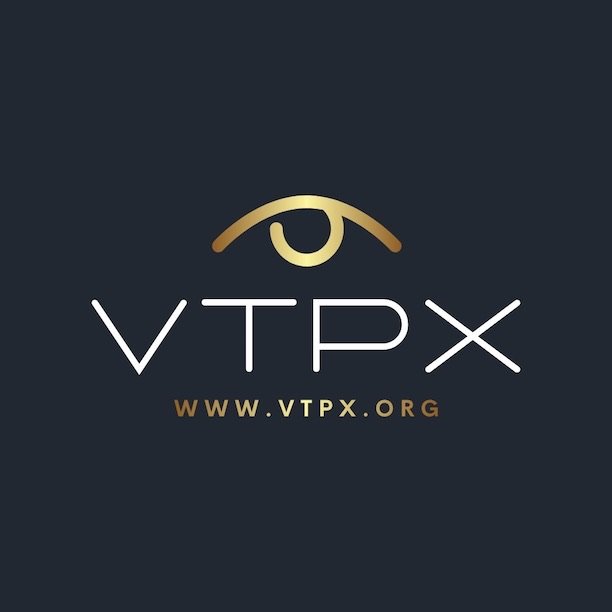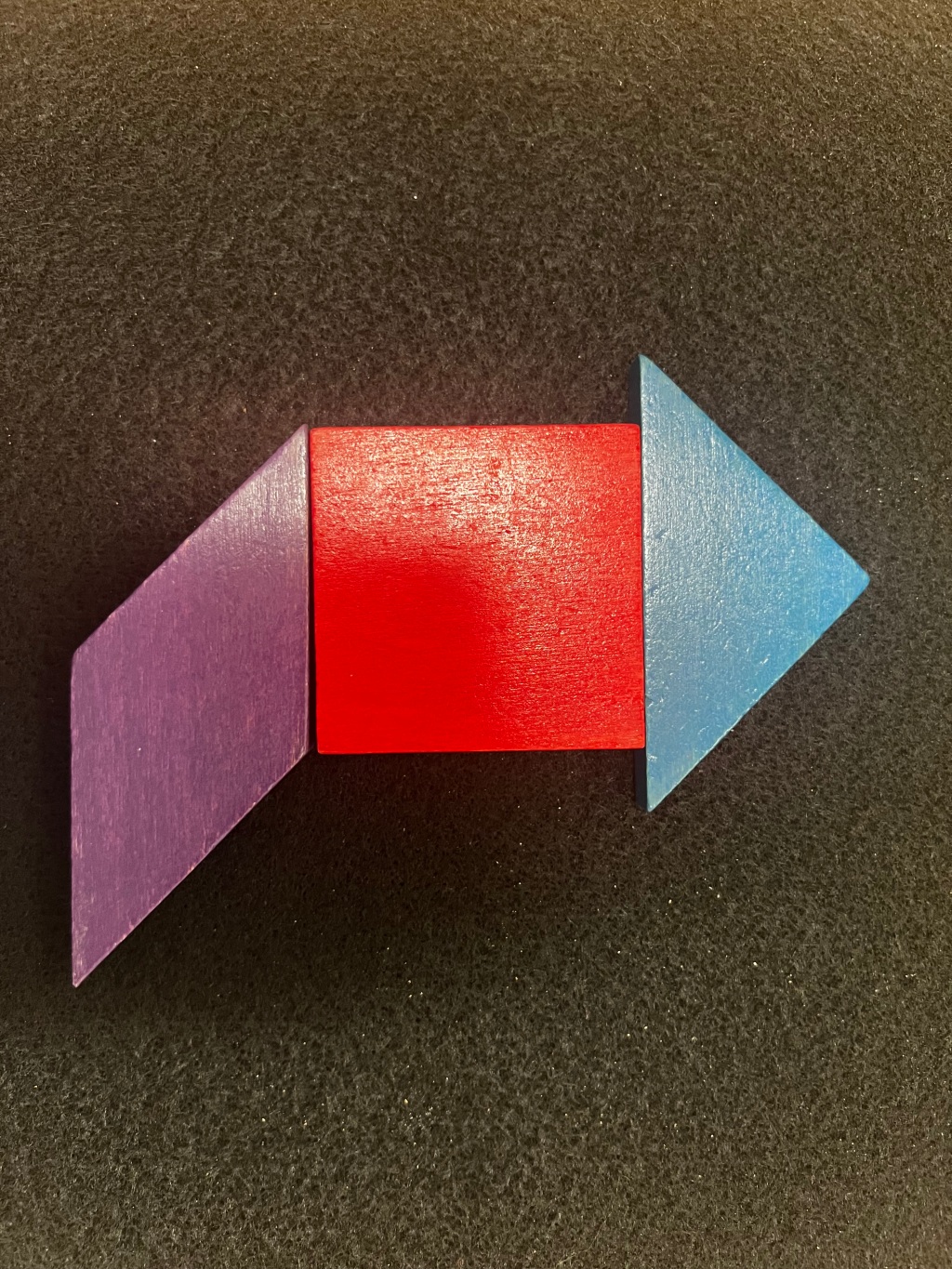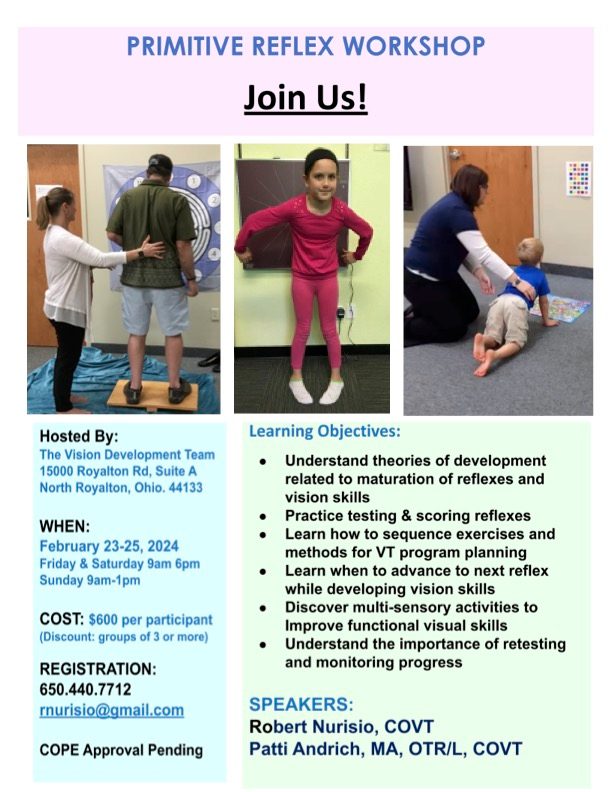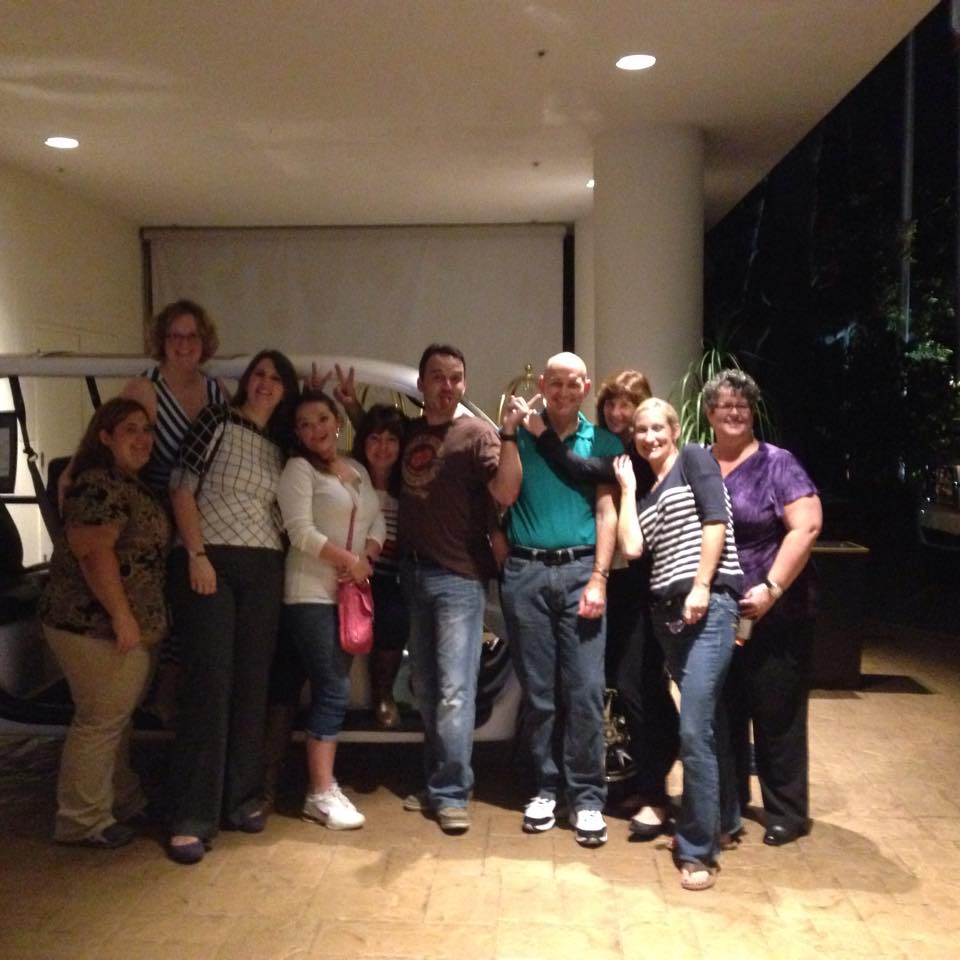This post appears as part of a series called Sit Down – candid conversations with real people detailing their journeys and experiences with Vision Therapy.
A Sit Down – with Cavin Balaster
For the benefit of our readers, can you explain how you are involved in Developmental Optometry?
Hi everyone, my name is Cavin. I have Diplopia due to a serious brain injury that I only had a 10% chance of surviving from. After falling 20 feet from a water tower onto an industrial Brooklyn rooftop, I hit the front of my head on the steel scaffolding on the way down, and hit the back of my head on the concrete rooftop. I was rushed to the hospital where I was comatose and put on life support. I was diagnosed with a Diffuse Axonal Injury. Approximately 90% of people with this injury never regain consciousness. Those who do wake up will often remain significantly impaired or in a vegetative state.
This injury caused many neurological disorders, including a condition that affects my vision. I have a condition called 4th nerve palsy. The fourth cranial nerve in the brain is called the trochlear nerve and it innervates the superior oblique muscle which is one of the muscles that is used to orient the eye. Essentially the communication between my brain and one of the ocular muscles is partially paralyzed. Because of this, I see double. I began doing vision therapy at the Austin Center for Vision Development, under the care of Dr. Denise Smith for almost two years. I still go to vision therapy there every week.
May 8, 2011 was a significant day in your life. What happened?
That was the day of my plummet. Before that day, I was a 27 year old bartender, anchored to a passion for music. I had developed that passion into a business that rented sound equipment for underground (and often illegal) warehouse parties throughout the five boroughs: a business that enabled me to continue to legally support myself in a party atmosphere, as I had been doing for years.
The view of the Manhattan city skyline is spectacular from the highest point that one can find. That particular night, some friends and I were enjoying the view from a water tower on a rooftop in Brooklyn. I apparently swung down from the apex in order to show a friend how to climb up, but my hand slipped.
The whole story of what happened is in the first chapter of the book I am writing which is currently available for download here: “Lights, Coma Action: Chapter One“:
Immediately following your fall you were hospitalized. How long were you in the hospital and what was your diagnosis?
Immediately after my fall, I was rushed to the hospital and was put on life support. I was comatose for 12 days, in which I developed pneumonia and MRSA while the doctors attempted to suction the fluids from my lungs. I am incredibly lucky to have survived, especially after also contracting these infections.
At first, they did a full body CAT scan, which showed many structural injuries, but it did not show the extent of my brain injury. This was a list of my injuries at that point:
- I had a bruised and swollen left eye (probably from hitting the scaffolding), luckily the actual eye orbit was bloodshot but ok.
- A nasal fracture
- A fractured right ileum and a fractured right sacrum (hip bones)
- 3 cracked ribs on my left side
- Both lungs were severely bruised
- A lacerated (deeply cut) left kidney
After only 48 hours after being admitted, the doctors made the call to try to wean me off of the oxygen that was being pumped in and out of my lungs. This was in an attempt to get me to breathe on my own. When they began turning the oxygen down, my involuntary response was to bite down, as hard as I could, onto the soft plastic tube that was supplying oxygen. My involuntary reaction had stopped ALL oxygen from making it to my lungs and I desaturated to a blood oxygen of 60% (95-100% is normal). I was moving all four extremities prior to this event, and afterward, the medical reports state that I was no longer moving the left side of my body. This lack of oxygen may have caused a hypoxic stroke.
I had an MRI scan done shortly afterward which explained why I would not wake up: I had some serious brain injuries. I had bruised the left frontal cortex of my brain (due to the scaffolding most likely), a subdural Hematoma (Blood gathering within the outermost layer of the brain), and I had shearing in the corpus callosum (Diffuse Axonal Injury). As I said before, 90% of people with this injury never regain consciousness, and those who do wake up will often remain significantly impaired or in a vegetative state.
How specifically was your vision affected?
I had gone to see a optometrist at SUNY Optical in Manhattan in September, 2011, 5 months after my brain injury. I was prescribed a prism to shift the image that I saw with my right eye up seven diopters (visual units), but I did not start therapy. I was using that lens for several months, and I began to see double in this prescription. When I first went to the Austin Center for Vision Development, I thought that my eyes were fine, but my brain wasn’t interpreting the images correctly. It took me months to understand exactly what was going on with my double vision. I learned that it was and is yet another example of how my brain and body don’t communicate well. I was partially correct that my eyes were fine, but my thought that my brain didn’t interpret the alignment wasn’t quite accurate. Normally, if you close your eyes for a while, and then open them and look at… say a penny, what happens is that your eyes see two separate images or two pennies (one from each eye) and immediately (a split second), your brain tells muscles in your eye to orient the eyes in a certain way so that the objects converge and you see the one penny that is actually there.
The fourth nerve controls the superior oblique muscle for eye movement, and palsy is a medical term meaning partial paralysis. The function of the superior oblique is primarily to move the eye downward and outward. Essentially the automatic eye movement to align my vision is partially paralyzed. You can see this in this photo. My right pupil is higher than my left… They are not at the same height.
Notice how my right iris and pupil sits higher than my left. You can see the white below my iris on the right eye (left side of picture), but not on the left (right side of picture).
When I went to be assessed for my vision I was put through many tests. Dr. Denise Smith assessed my right eye as seeing nine diopters below my left eye. I had already deteriorated two diopters and in fact, the higher the prism, the more my brain liked it. The way this was tested was by switching the prism one unit up each time and asking me which one looked better. I said that the eight looked better that the seven, the nine looked better than the eight… and so on. Dr. Smith said that I was “eating up the prism”, meaning that my brain was more than willing to get lazy and let the prism adjust my vision so that I no longer needed to use the paralyzed eye muscles. She said that if we don’t do something right now, that muscle will get lazier and lazier and not try to regenerate.
I was beginning to see double in my current prism strength and Dr. Smith had me stay in the seven diopter prisms and begin therapy. On our way out the door, Dr. Smith said to my mom “I know this is expensive, thank you so much for caring enough to do this for him. I don’t know if he’ll ever not wear glasses, but I think we can make some real progress here.” I wasn’t happy with my vision in my current glasses, so I wasn’t happy with her plan to leave me in my current lenses because I saw double which made things frustrating, annoying, and dizzying. She instructed me to do a few exercises until I began therapy. I did just that, and miraculously saw my vision improve. The two images soon converged with a 7 diopter prism. This was still 7 units from where I needed to be to see single, but things were finally moving closer together rather than further apart. Today, I am wearing only a 4 diopter prism.
After your accident and release from the hospital, you were photographed many times wearing an eye patch, seemingly to alleviate the symptoms of double vision. Did the patch come at the recommendation of a doctor or was it your idea?
About a month after my brain injury, I told one of my occupational therapists about my double vision and she gave me an eye patch and told me to switch eyes every 20 minutes. This was to keep both of my eyes strong so that the oculo-motor muscles would not atrophy like so much of my body had. I set an alarm on my phone that would annoy everyone around me, but it also told me to switch my eye patch… Plus, the eye patch made me look pretty tough!
How did you first come to learn about Vision Therapy?
Honestly, I have no idea. I was in a complete brain fog when I began VT. My mother talked to my aunt, who talked to a colleague who highly recommended it, and the next thing I know, I’m trying to fuse divergence, and base down before even getting approved for funding for any therapies.
During your initial examination with Denise Smith O.D., what diagnosis and what treatment options were you given?
Unfortunately, I was still in such a brain fog so I do not even remember, but I would assume that the diagnosis was what I talked about earlier.
Can you describe your experiences in Vision Therapy?
I have been going for about 2 years, and VT has helped an extraordinary amount… not only with my vision, but it has helped to illuminate some of the shadow that has been cast by my brain injury. I love Vision Therapy because its purpose is not to train the eyes, but rather to train the brain. You look with your eyes, but you SEE with your brain. Neuro-plasticity is the brains ability to change and rewire itself, which is exactly what needed to happen in order for me to recover normal function after the connections within my brain were severed in some areas, and damaged in others. They say “neurons that fire together wire together” and that principle seems to be how organisms learn to do anything new, and if a skill is forgotten or that area in the brain is damaged, to regain an old skill. This principle seems to be the centerpiece of VT and I am in awe of how effective it really is.
About one year after your accident, you started blogging about where you were on significant dates the year before. Your perspective at times is very raw, yet the chronicle of progress is very valuable in appreciating each step forward. Has blogging been cathartic for you?
Beyond anything I ever could have imagined, blogging has been extremely cathartic. I had damage to my corpus callosum, which networks the left and right hemispheres of the brain. I felt compelled to write. In doing so, I realized that it was an effort to construct a grounding narrative in order to integrate the trauma that my body registered but my damaged mind had not been able to yet grasp. Blogging was so beneficial because if forced me to take the “right brain trauma” that I experienced, and to bring it to a “left brain narrative.”This activity was precisely the connections that I needed to make around the damaged areas that were in this connection matrix that was shown to be damaged in my MRI scans.
As I got better, my friends began to call me “Mr. Bounce” after the old Roger Hargreaves children’s book because I seemed to “bounce right back!” I did not bounce though… It is a haul, not a bounce. There is no undoing a brain injury.
I continue to write about the most important and useful methods that I have used to recover, including brain building nutrition (what I like to call “food for thought”), in hopes to help other survivors and their friends and families.
As part of your recovery, you have made great strides in spreading awareness about Traumatic Brain Injuries. Can you tell us more?
I have been contacted by the friends and families of many brain injury survivors and I share my strength and hope with them, as well as the methods that I have used in order to recover to the point that I have. No two brains are the same, so no two brain injuries are the same. We do not seem to know enough about the brain to have a specific diagnosis and treatment. But an exact diagnosis is not necessary to help brain injury survivors now!I imagine the neurons in my brain like plants. If you see a wilting and sick plant, you don’t need a degree in botany and a diagnosis to nurse it back to health by giving it sunlight, water, and good soil. Same with the brain. Even without the ability to accurately diagnose a brain disorder, if we can support the environment that the neurons are in (glia), then the neurons can thrive. This is the future of neuro-rehab because it makes sense, the methods that I use are safe, and it seems to work! I hope to eventually open my own clinic to help brain injury survivors to recover. I have been studying physiology, biochemistry, human metabolism, pharmacology, and medical neuroscience on my own, and I plan to go on to study all of these subjects at an accredited medical university while also learning as much as I can about brain injury, human nutrition, vision therapy, and alternative therapies. Through my studies and reaching out to doctor whom I admire, I recently met an amazing Doctor of Osteopathic Medicine, Chiropractic Medicine, and Naturopathic Medicine named Dr. Alex Vasquez. He invited me to the International Conference on Human Nutrition and Functional Medicine in Portland, Oregon after I contacted him to thank him for his work. Dr. Vasquez invited me on stage at one point, where I got a chance to speak to a room full of a few hundred practitioners and medical students about brain building nutrition (I like to call it “food for thought”). I will post the video to my website when I get it.
What is Lights, Coma, Action?
I have written about 60,000 words in my blog, documenting the first year of my recovery, and have begun to write this entire story into a book that I hope will become an important resource for brain injury survivors everywhere, as my blog has already become, as well as a contribution to TBI perception and understanding. This book will be the story of who I was (LIGHTS), how I sustained a serious brain injury (COMA), and my successful recovery and methods (ACTION!). These are my adventures in brain injury: “LIGHTS, COMA, ACTION!”
Your book sounds very interesting, and will surely provide a unique perspective on Traumatic Brain Injuries to both those of us who try to help, and those who have suffered the effects. Personally, I am really looking forward to its release. If someone would like to contribute to your fundraising efforts to make your publication possible, how can they do this?
Watch my Kickstarter video and if you would like to help out, you can pre-order the book here:
I was recently in a podcast that spoke a lot about vision therapy.
This is my website. If you have a halfway decent computer, click on the index link to here all of the posts laid out in chronological order.
Here is the first chapter of my book.
I also host an “Ask Me Anything” page on Reddit that be found here.
Thank you so much, Robert!
Some Closing Thoughts: Special thanks to Cavin for this interview. Cavin and I first met about a year ago when I moved to Austin and his story became an instant inspiration for me, as someone with a special affection for those who have suffered from Traumatic Brain Injuries. As a result of his accident, Cavin still has many limitations but he is not one to seek pity; instead he has turned his misfortune into an opportunity to educate and assist others by sharing his story. He has a blog, maintains a Q & A on Reddit, is writing a book, and has even done some public speaking recently. I am so proud to know him and to be his friend.
Cavin recently began a fundraising campaign to help with costs of publishing his book. If you’d like to help, please pre-order a copy of his book, or simply make a donation to his cause. Donations can be as little as $1.00. You can find information on both options here.
If you’d like to contact Cavin directly with questions or comments, please email him at cavinbounce@gmail.com.
Thanks, Cavin!!








Leave a comment